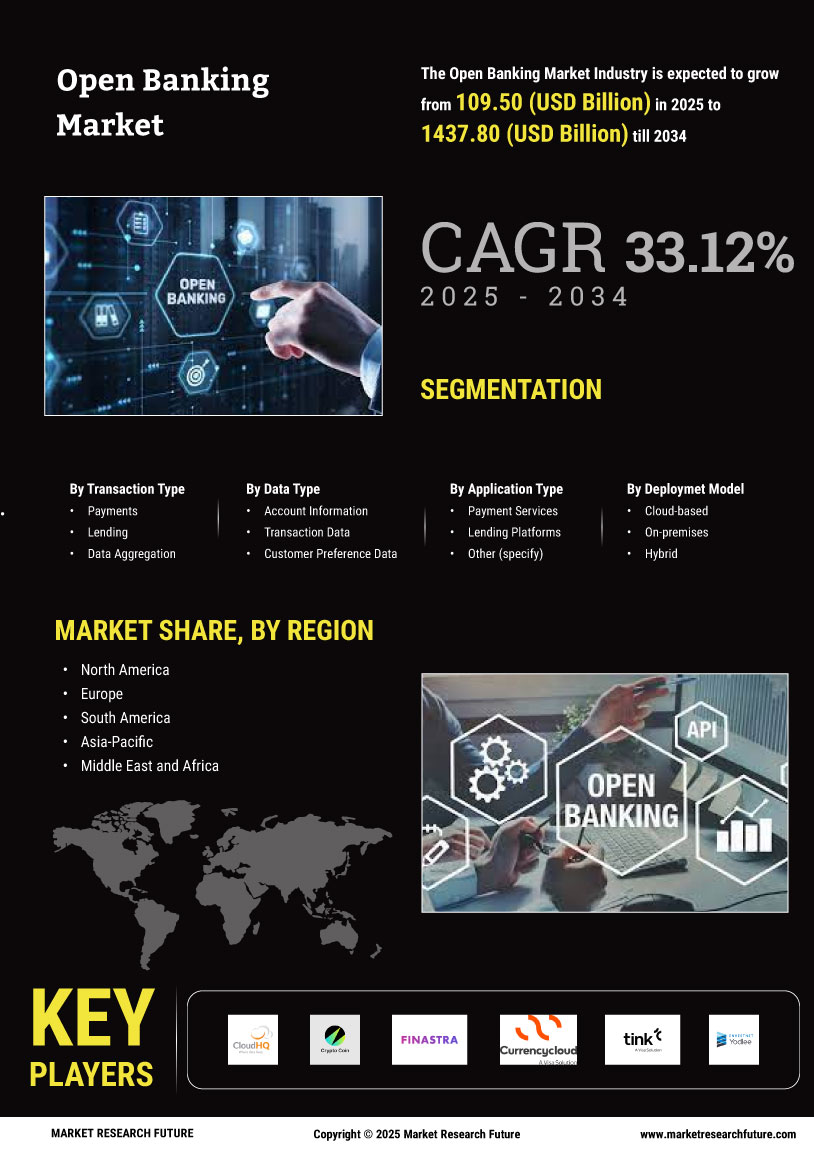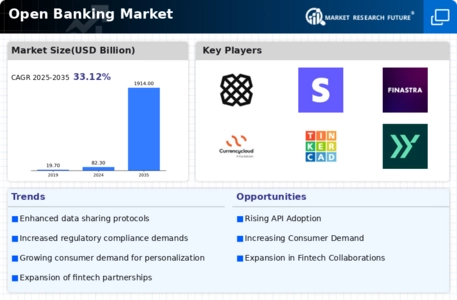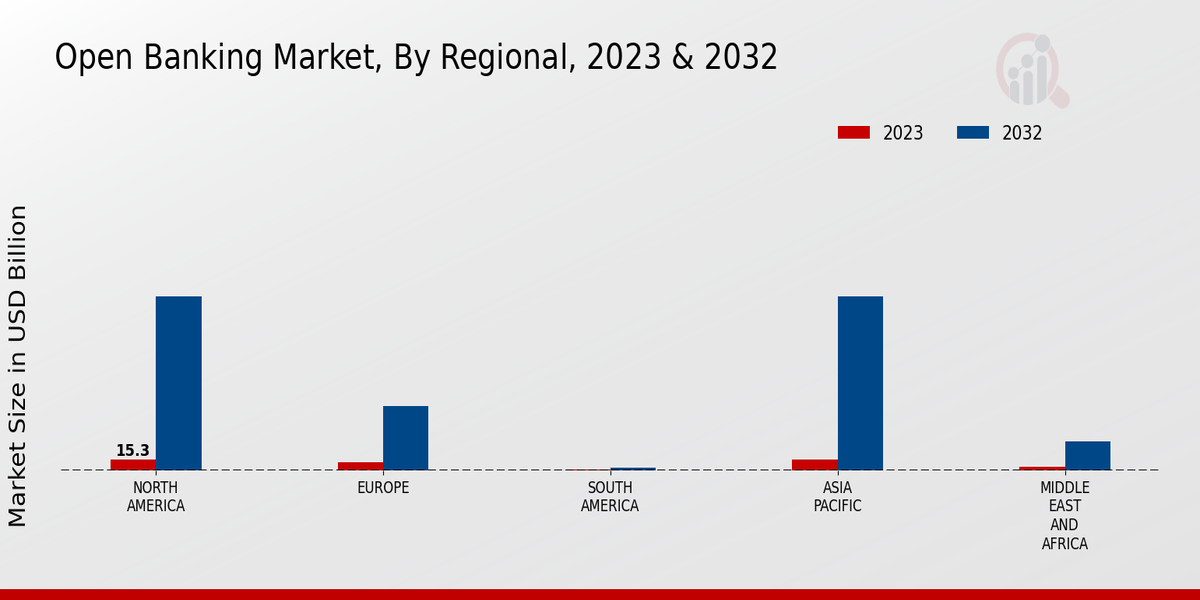Regulatory Support
Regulatory frameworks play a pivotal role in shaping the Global Open Banking Market Industry. Governments worldwide are implementing regulations that promote transparency and competition in the banking sector. For example, the European Union's PSD2 directive mandates banks to share customer data with authorized third-party providers, fostering innovation. This regulatory support encourages financial institutions to adopt open banking practices, thereby enhancing consumer trust. As a consequence, the market is expected to experience substantial growth, with projections indicating a rise to 1914.0 USD Billion by 2035, driven by favorable regulatory environments.
Market Growth Projections
The Global Open Banking Market Industry is on a trajectory of remarkable growth, with projections indicating a substantial increase in market size. By 2024, the market is expected to reach 82.3 USD Billion, and by 2035, it could soar to 1914.0 USD Billion. This growth is underpinned by a compound annual growth rate of 33.12% from 2025 to 2035. Such figures illustrate the burgeoning interest in open banking solutions and the transformative potential they hold for the financial services sector. The increasing adoption of open banking practices is likely to reshape the industry landscape in the coming years.
Technological Advancements
The Global Open Banking Market Industry is propelled by rapid technological advancements in financial services. Innovations such as Application Programming Interfaces (APIs) enable seamless data sharing between banks and third-party providers, enhancing customer experiences. For instance, banks are increasingly adopting cloud computing and artificial intelligence to improve service delivery and operational efficiency. These technologies facilitate real-time data access, which is crucial for personalized banking solutions. As a result, the market is projected to reach 82.3 USD Billion in 2024, reflecting the growing demand for tech-driven financial solutions.
Increased Financial Inclusion
The Global Open Banking Market Industry is also driven by the need for increased financial inclusion. Open banking initiatives aim to provide underserved populations with access to financial services, thereby promoting economic growth. By enabling third-party providers to offer innovative solutions, open banking can help bridge the gap for individuals who lack traditional banking access. For instance, mobile banking applications are emerging as vital tools for reaching unbanked communities. This focus on financial inclusion is expected to contribute to the market's growth, aligning with global efforts to create a more equitable financial landscape.
Collaboration Between Banks and Fintechs
Collaboration between traditional banks and fintech companies is a driving force in the Global Open Banking Market Industry. This synergy allows banks to leverage fintech innovations while providing fintechs with access to established customer bases. For example, many banks are partnering with fintech firms to enhance their digital offerings, such as mobile payment solutions and robo-advisory services. These collaborations not only improve customer engagement but also foster a competitive landscape that benefits consumers. As a result, the market is poised for significant expansion, with projections indicating a growth trajectory towards 1914.0 USD Billion by 2035.
Consumer Demand for Personalized Services
The Global Open Banking Market Industry is significantly influenced by the increasing consumer demand for personalized financial services. Customers are seeking tailored banking experiences that cater to their unique needs and preferences. Open banking facilitates this by allowing third-party providers to access customer data, enabling the creation of customized financial products. For instance, fintech companies leverage this data to offer personalized budgeting tools and investment advice. This shift towards personalization is likely to drive market growth, contributing to a compound annual growth rate of 33.12% from 2025 to 2035.













